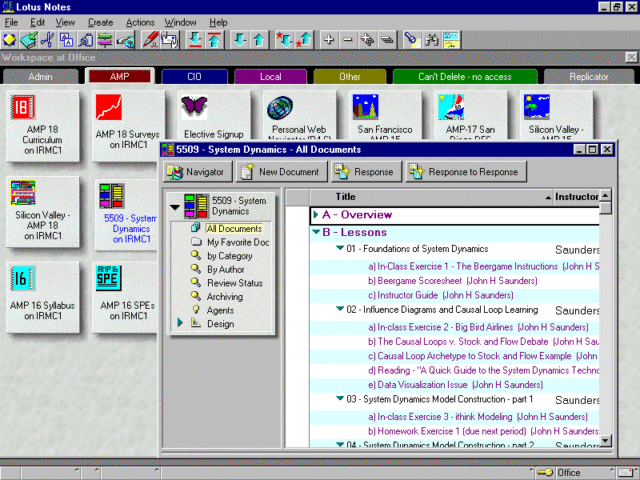In a world where you have to social distance, how do you scrum? The global pandemic and the corporate office shutdowns resulting from it have wrought changes to how work works.
While essential people in certain industries have continued their jobs in ways that are relatively familiar under layers upon layers of personal protective equipment, many companies have had to find ways to continue other work at a “social” distance. And in those situations, employees must find ways to continue collaborating as they did when they were packed into cubicles, open floor plans, and all the other various patterns of modern office spaces.
Workplace changes due to COVID-19 won’t go away anytime soon. Tech companies like Google, Facebook, and Microsoft have pushed back the return of employees to offices until well into 2021, and Twitter has declared that employees need never return to the corporate office. Companies in other industries are making the same sorts of calculations, while employees are rethinking not just how they work but even where they live.
All of this hinges on the evolution of tools that make this remote way of work possible. For some of us—well, like everyone who’s worked for Ars, for instance—that isn’t anything new. As I’ve noted previously, I’ve been working primarily from home for over 25 years, and being an early adopter of every technology that could reduce the remoteness of being remote means I’ve lived through the teething pains of collaboration software and distributed teams.

Unfortunately, even as companies have adopted collaboration tools, it seems like the vast majority of them have until recently been confused about how to use them. Past generations of “collaboration” have been about processes and structure—and have done little to reduce the need for out-of-band communication.
Whatever passes for “normal” over the next few years will demand a lot from collaboration tools, as organizations re-examine how to achieve their missions and stay financially viable. The new world of collaboration will require organizations to replicate the unstructured interactions of the office and help employees feel like part of a coherent team even when they are distant, enabling social interactions and reinforcing the team agenda in the absence of up-close face time.
Based on years of remote collaboration work at various organizations and observations of things multiple organizations have done over the past six months to adjust, here are the things I see as keys to successful team operations in the lockdown and post-lockdown world.
The foundation
In the beginning, “collaboration” software was mostly about communication. “Groupware” products like Lotus Notes moved collaboration away from simple email toward document and data-centric communication. These capabilities—messaging, document-based collaboration, and lightly structured workflow—remain the basis of most organizations’ collaboration.
It’s taken a lot to get organizations to budge beyond these basic, unstructured collaboration tools—mostly because they’re unstructured and flexible. Email has been declared dead hundreds of times over in the past two decades, and yet we’re all still using it to send document attachments and route work. And despite the attacks of September 11, 2001 briefly giving a jolt to video conferencing, it took the growth of broadband Internet and ubiquity of devices with built-in cameras—not to mention almost another decade—to make video conferencing collaboration palatable for most organizations.

Many of these technologies worked pretty well early on, though. I was an early adopter of Ray Ozzie’s Groove back before it had a Microsoft label on it, and I pushed Wikis, SharePoint, and other tools vigorously at companies I worked at because they made my job as a remote employee easier. But there were simple reasons why those companies, and many other organizations, didn’t grab onto those tools: they cost money to deploy and maintain, and they required some cultural changes to embrace.
That’s not to say that Microsoft didn’t sell a lot of SharePoint (especially to the government) a decade ago, or that companies didn’t spend big on custom workflow systems. They did, but the results were usually far from collaborative. Like the big ERP projects of the past two decades, these early initiatives were top-down, compliance focused efforts to make major changes to not just technology but how people did their work. (And let’s be honest, who really enjoys using these kinds of tools? Show of hands for everyone in the audience who actually-for-real loves SharePoint. Mmm-hmm. I thought so.)
Whatever passes for “normal” over the next few years will demand a lot from collaboration tools
However, technological and cultural shifts over the past few years—and the necessity of the past six months—have lowered barriers to new forms of collaboration or leveled them entirely. Many of us live in Slack, Google documents and spreadsheets, and various other ad-hoc collaboration tools already. Many of us have had a taste of the future, and we’re ready for more. Others will have to be coached along the way.
Ars Technica / Balkantimes.press
Napomena o autorskim pravima: Dozvoljeno preuzimanje sadržaja isključivo uz navođenje linka prema stranici našeg portala sa koje je sadržaj preuzet. Stavovi izraženi u ovom tekstu autorovi su i ne odražavaju nužno uredničku politiku The Balkantimes Press.
Copyright Notice: It is allowed to download the content only by providing a link to the page of our portal from which the content was downloaded. The views expressed in this text are those of the authors and do not necessarily reflect the editorial policies of The Balkantimes Press.

